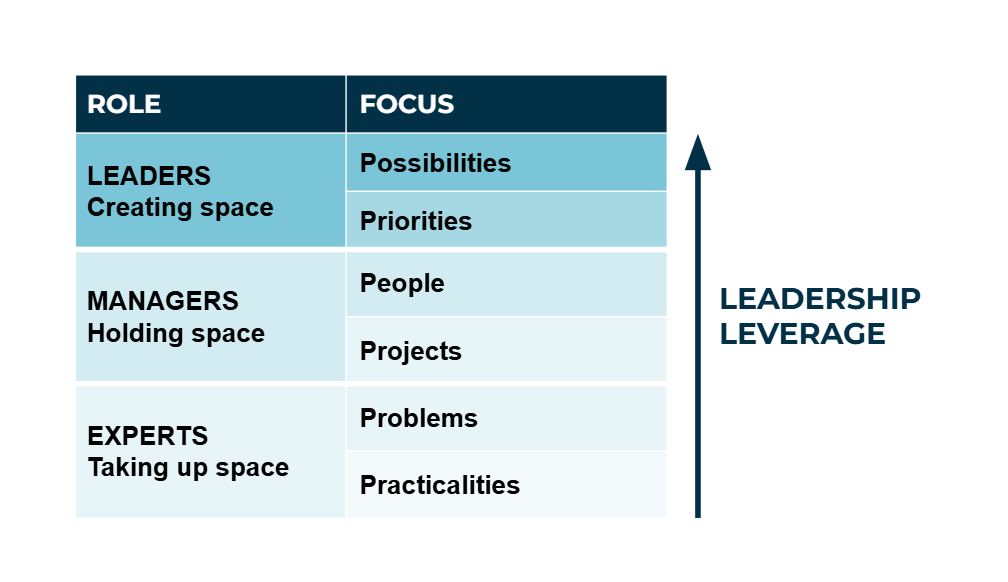Leadership Leverage

|

Let’s break down each level in reverse order:
Practicalities – the stuff that keeps the wheels turning. For me, that's booking travel, updating spreadsheets, filling out forms, sorting landing pages and the like.
Problems – this is the firefighting mode where you're solving problems as they arise. For me, that's things like client emails or fixing a botched event timing (sorry folks)!
Projects – this is where we put a structure around a bundle of problems and practicalities. Projects have leverage, as the structure ends up doing some of the work for us.
People – hiring great humans, coaching your team, and shaping culture is high-leverage stuff. Done well, every hour you spend here should give you hours back later on.
Priorities – these are your strategic choices - what you say yes to, and what you say no to. A lot flows from these choices!
Possibilities – this is imagining what’s next and exploring new ways to create value. (Sadly, it's the area we get little time for.)
The higher-leverage activities have a stronger influence on everything below them. When you get motivated by new possibilities, your priorities naturally shift - and so do the people, projects, problems and practicalities below.
The more time you spend higher up the ladder, the less often you’ll need to run around the bottom.
So, here are some questions to consider... where are you investing your time? And what might become possible if you and your team could shift yourselves further up?
Paul